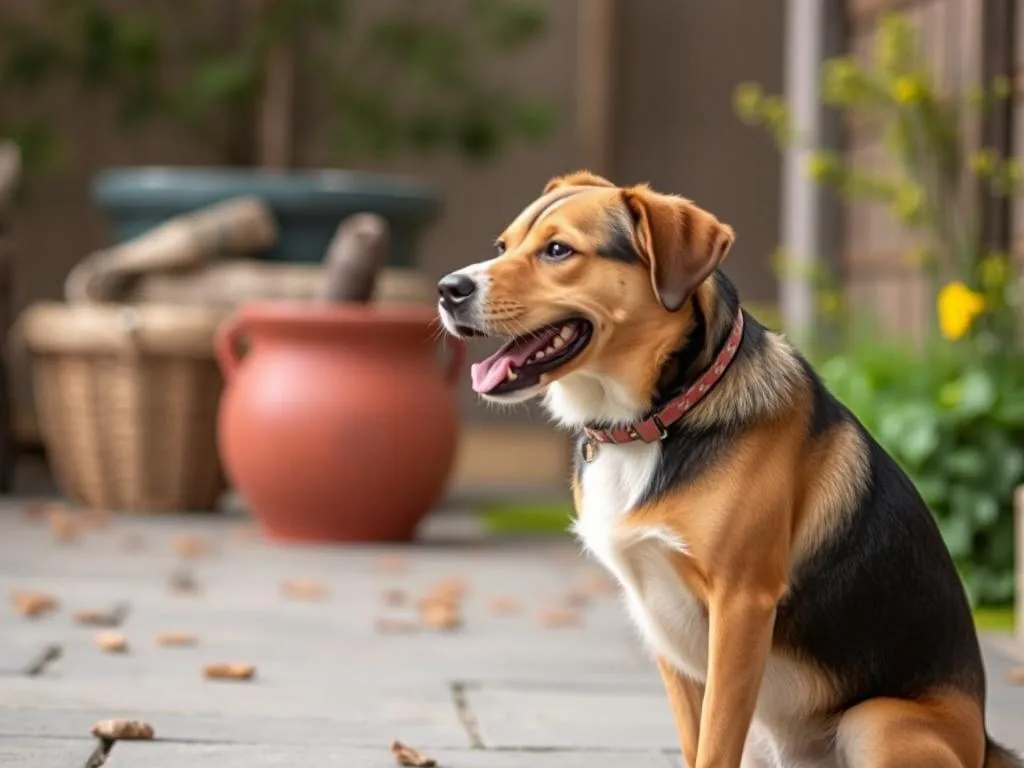
Introduction
Teaching your dog to come when called is a fundamental aspect of training that can enhance your dog’s safety and your peace of mind. A reliable recall can prevent dangerous situations and strengthen your bond with your furry friend. However, many dog owners rely heavily on treats to train this behavior. While treats can be effective, there are numerous benefits to teaching your dog to come without relying on them. In this article, we will explore how to achieve that, covering essential concepts such as understanding your dog’s behavior, preparing for training, basic commands, and advanced techniques. With 2000 words of valuable insights, this guide is designed for dog owners and trainers eager to improve their dog’s recall skills.
Understanding the Dog’s Behavior
The Psychology of Dogs
To effectively teach your dog to come without treats, it’s crucial to understand their psychology. Dogs are instinctual creatures, and their behavior is often driven by a combination of survival instincts and learned experiences. Recognizing their natural tendencies helps you tailor your training methods to be more effective. For instance, dogs thrive on social interaction and seek approval from their owners. By tapping into these instincts, you can motivate your dog to respond to your commands without the need for treats.
Common Reasons for Poor Recall
Several factors can contribute to a dog’s poor recall, including:
- Environmental distractions: Dogs are naturally curious and easily distracted by their surroundings. Loud noises, other animals, and even interesting smells can divert their attention away from you.
- Lack of motivation beyond treats: If a dog is primarily motivated by food, they may not respond well to commands when treats are not available.
- Fear or anxiety around training: Some dogs may feel anxious or scared during training sessions, causing them to avoid responding to commands.
Understanding these factors is the first step in developing a more effective training strategy.
Preparing for Training Without Treats
Building a Strong Bond with Your Dog
A strong bond with your dog is the foundation of effective training. Trust and companionship are essential for creating a supportive environment where your dog feels secure. Spend quality time engaging in activities that your dog enjoys, such as playing fetch, going for walks, or even just cuddling on the couch. This connection will encourage your dog to respond positively when you call them.
Creating a Positive Learning Environment
The environment in which you train your dog can significantly impact their ability to learn. Choose a quiet, familiar location with minimal distractions. This could be your backyard or a quiet park. As your dog becomes more comfortable with the recall command, you can gradually introduce distractions to help them learn to focus on you in various situations.
Tools and Equipment
While you don’t need treats to train your dog, having the right tools can enhance your training sessions. Consider the following:
- Leash and collar: A standard leash and collar will help maintain control during training.
- Clicker or whistle: These tools can serve as alternative cues to treats, allowing you to communicate with your dog effectively.
Basic Commands and Foundation Skills
Teaching the “Sit” Command
Before focusing on recall, it’s essential to establish basic commands. Teaching your dog to “sit” is a great place to start. Here’s how to do it:
- Hold a treat close to your dog’s nose.
- Move your hand up, allowing your dog’s head to follow the treat.
- When their head is up, their bottom will lower to the ground.
- Once they’re in a sitting position, say “sit,” and reward them with verbal praise.
This command serves as a foundation for further training, including recall.
Establishing a Reliable “Stay”
The “stay” command is another crucial skill that complements recall training. To teach this command:
- Start with your dog in a sitting position.
- Open your palm in front of them and say “stay.”
- Take a few steps back. If your dog remains in place, return and praise them.
- Gradually increase the distance and duration before praising.
A reliable “stay” will help your dog understand that they need to remain in position until called, reinforcing the recall command.
Engaging Playtime as Motivation
Instead of treats, engage your dog in play as a reward for responding to commands. Activities like tug-of-war or fetch can be highly motivating. When your dog comes to you, initiate a game they enjoy. This not only reinforces the recall command but also makes training sessions more enjoyable for both of you.
Techniques for Training Recall Without Treats
Using Voice and Body Language
Your tone of voice and body language play a significant role in your dog’s response. Use an enthusiastic, upbeat tone when calling your dog. Bend down, wave your arms, or use other gestures to signal that it’s time to come. Your dog will be more likely to respond positively to your call if they sense excitement and encouragement.
The “Come” Command
To introduce the “come” command:
- Start in a controlled environment with minimal distractions.
- Use a consistent word or phrase, such as “come” or “here,” and call your dog while using your body language to encourage them.
- When your dog approaches, shower them with praise and affection.
As your dog gets the hang of the command, gradually increase the distance and introduce distractions.
Gradual Distraction Training
Begin training in a quiet environment and progressively introduce distractions as your dog becomes more reliable. Start with mild distractions, such as toys or sounds, and work your way up to more challenging situations, like busy parks. This gradual exposure will help your dog learn to focus on you even when there are distractions present.
Short Distance Recall Drills
Start with short-distance recall drills to build confidence. Here’s how to do it:
- Stand a few feet away from your dog and call them to you.
- Praise and reward them with playtime when they come.
- Gradually increase the distance as your dog becomes more reliable.
These exercises will help establish a strong recall foundation.
Reinforcing Recall Behavior
Praise and Affection as Rewards
Verbal praise and physical affection can be powerful motivators for your dog. When your dog responds to the “come” command, immediately praise them with words like “good job!” and pet them. The timing of your praise is crucial; it should occur the moment your dog comes to reinforce the positive behavior.
The Role of Play as a Reward
Transform the recall into a fun game. After your dog successfully comes to you, engage them in a playful activity. This could be a game of fetch or tug-of-war. By associating recall with play, your dog will be more inclined to respond positively in the future.
Consistency and Routine
Consistency is key to effective training. Establish a regular training schedule, practicing recall multiple times a day. Repetition will help reinforce the behavior and make it second nature for your dog.
Troubleshooting Common Issues
Overcoming Distractions
If your dog struggles with distractions, consider the following strategies:
- Start small: Begin training in an environment with minimal distractions.
- Use a long lead: This allows you to maintain control while giving your dog some freedom to explore.
- Practice focus exercises: Teach your dog to focus on you by using commands like “look” or “watch me.”
Dealing with Fear or Anxiety
If your dog shows signs of fear or anxiety during training, it’s essential to address these issues. Signs may include cowering, hiding, or excessive barking. To build confidence:
- Use positive reinforcement: Reward small successes to encourage your dog.
- Create a safe space: Allow your dog to retreat to a quiet area if they feel overwhelmed.
- Gradual desensitization: Introduce new experiences slowly and positively.
Avoiding Negative Associations
Ensure that training sessions remain positive and engaging. Avoid scolding or punishing your dog for not responding to commands. Instead, focus on encouraging and rewarding the desired behavior. Keeping training sessions light-hearted will prevent negative associations with recall training.
Advanced Recall Techniques
Introducing Distance and Duration
As your dog’s recall improves, gradually introduce greater distances and longer durations before calling them. Start by calling them from a distance in a controlled environment, and then gradually move to more challenging locations. This helps reinforce the command and builds your dog’s confidence.
Using Positive Reinforcement Games
Incorporate games that reinforce recall into your training routine. For example, you can play hide and seek by hiding somewhere in your home or yard and calling your dog to find you. This not only makes training fun but also strengthens your dog’s recall skills.
Socialization for Improved Recall
Socializing your dog with other dogs and people can enhance their recall abilities. Interacting with different environments and stimuli can help your dog remain focused on you, even when distractions are present. Regular playdates or trips to dog parks can provide valuable socialization opportunities.
Conclusion
Teaching your dog to come without treats may take time and patience, but the results are well worth the effort. A reliable recall not only ensures your dog’s safety but also strengthens your bond with them. By understanding your dog’s behavior, creating a positive learning environment, and using engaging techniques, you can achieve effective recall training. Remember to be consistent, practice regularly, and, most importantly, have fun with your furry companion. A strong recall will lead to countless adventures and cherished moments together.









